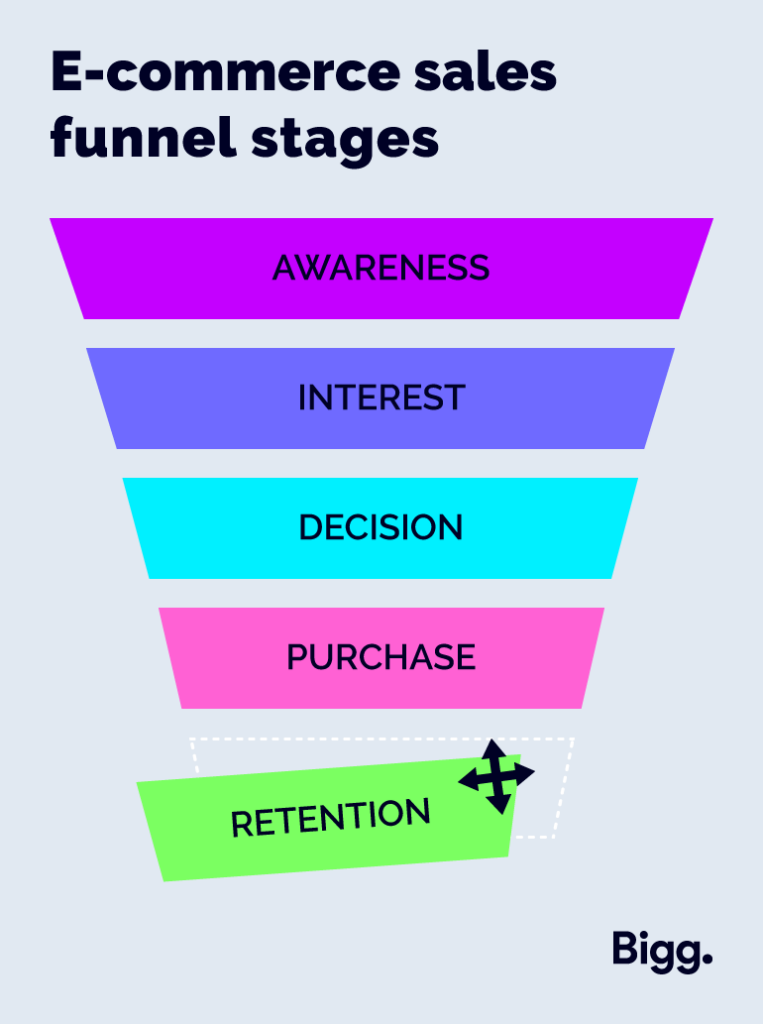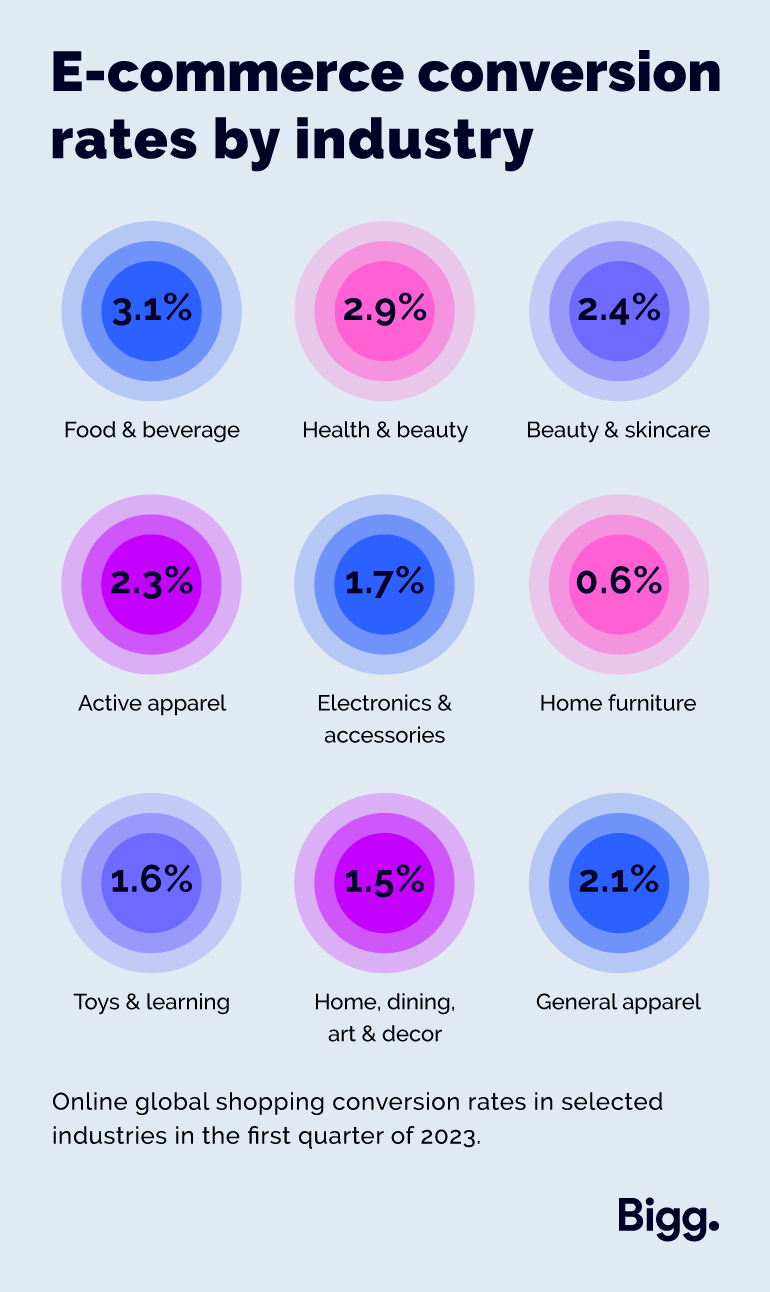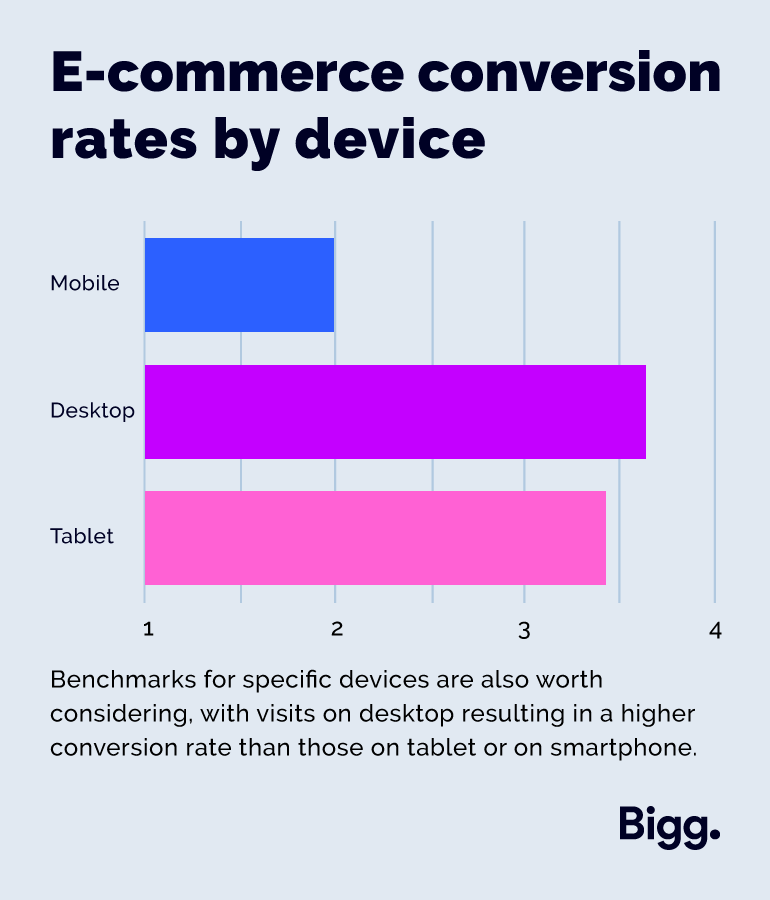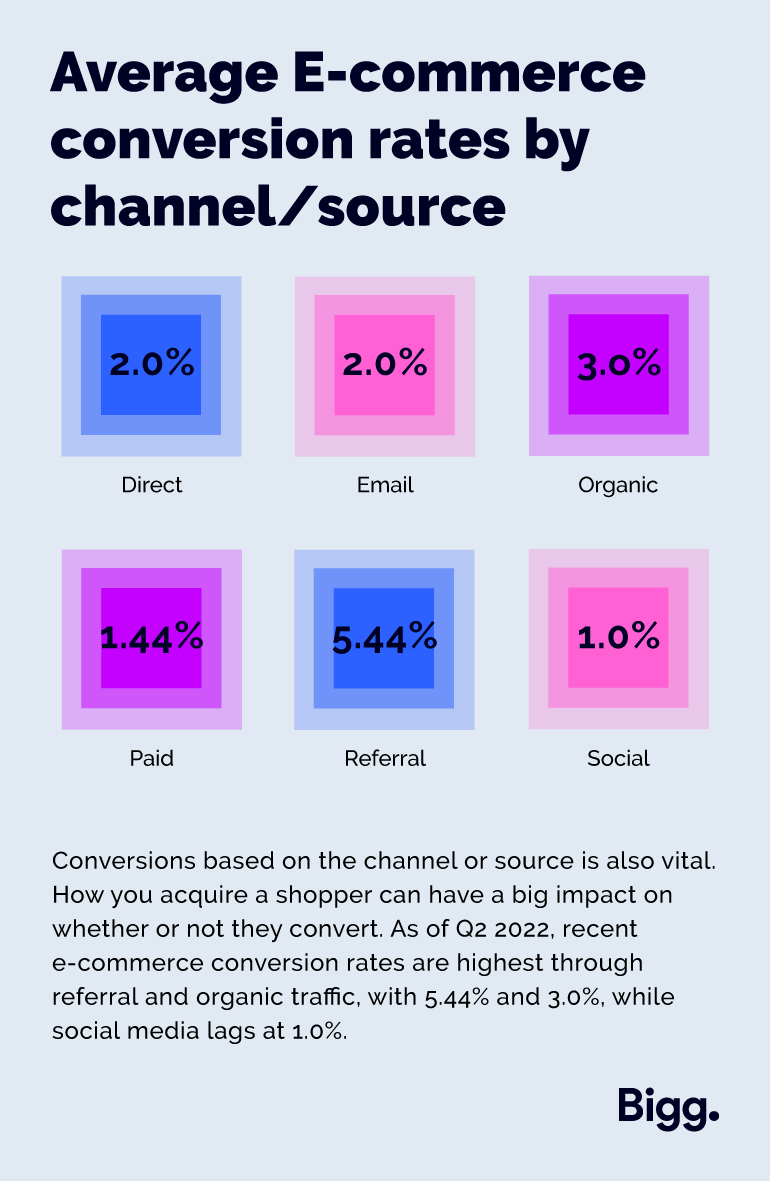Launching an e-commerce store as an exciting side-hustle? Or perhaps you already have a thriving online e-commerce platform and want to see how you measure up to competitors?
Considering the sheer number of online shoppers, understanding your customer needs and how your platform stacks up against rivals is more crucial than ever.
Setting expectations and benchmarking e-commerce conversion rates is a fantastic way to understand industry standards in 2023 and beyond, so let Bigg guide you through the objectives to strive toward.
Significance in the E-Commerce Landscape
If you’re reading this, you’ve likely already asked the important questions: ‘What is a good e-commerce conversion rate?’ and ‘What does the conversion rate indicate?’- but the answers are far from simple.
In basic terms, businesses typically label actions that measurably impact their online business as ‘e-commerce conversions’.
This could represent a simple interaction (for example, each time someone shares their contact information) but, more often than not, it represents a transaction or an instance in which a product has been purchased.
These conversions are often used as key performance indicators to review the effectiveness of a site or individual page, with a funnel-based view of the conversion process (see below) being a great way to visualise the various steps a potential customer may take throughout.

As you can see, the process is very rarely as simple as a prospective buyer immediately following up on their interest in a product or service; there are in fact several stages to navigate.
An Introduction to Benchmarking
Benchmarking is the process of measuring performance by comparing established results and data points, with e-commerce businesses using these helpful benchmarks to measure success through comparison.
Many online business owners set their performance based on industry benchmarks.
For example, if you’re attempting to sell to a market with a low overall conversion rate on average, a seemingly good conversion rate may still be lower than the average across all markets.
Ideally, your conversion rate will remain steady or even increase as you become more established. If it is low or suddenly drops, this could indicate a number of things, from offputting delivery costs to unenticing product pages.
Success Across the Board
Overall, across all markets and product types, average ecommerce conversion rates are universally accepted to be around 2.5% to 3%. That being said, if you aren’t yet reaching this figure, it certainly doesn’t mean that you’re failing. As a general rule, if your conversion rate sits below 0.5%, you likely have room to improve, and if it’s above 3.3%, you have a very good conversion rate indeed.

The fluctuation in averages between product types and markets can vary wildly, as demonstrated by this worldwide study hosted on Statista.
Observing data from the first quarter of 2023, conversion rates on e-commerce sites were typically highest in the food and beverage sector, at 3.1%. This stands in contrast to the conversion rate for businesses specialising in home furniture products – just 0.6% on average.
The proportion of e-commerce website visits that result in a purchase varies significantly amongst the demographics of website visitors too.
There is plenty of variation between devices, with visits conducted via desktop computers resulting in a noticeably higher conversion rate than those on tablet or on smartphone.

These variables prove that the idea of a universal benchmark for e-commerce conversion rates is a myth, though this isn’t to say you can’t compare against direct competitors selling similar products and services.
The Golden Standard
Most businesses measure their e-commerce conversion rate at regular intervals, and setting objectives to regularly review targets can help to understand trends.
Whereas weekly monitoring can help you to identify if there are any major dips or spikes that might indicate something on the site is broken, a quarterly review can open up opportunities to make larger strategic differences in the conversion rate. This can include rebranding, introducing fresh readable content or even redesigning the user experience altogether.
Observing conversion rates can prove increasingly useful as you break them down further, identifying different types of visitors. This may include, but certainly isn’t limited to, identifying groups with different intentions and different relationships with your site.
A first time visitor who has been directed to the site via social media may be less likely to purchase a product than an existing registered member of your site, for example, so it is important to make this distinction when browsing conversion stats.
Improving Conversion Rates
When looking to improve your conversion rate, it’s important to consider everything from traffic sources and product price points to purchase type and location when browsing customer conversion rates.

By doing this, you may very well spot a recurring trend that makes finding a solution much easier. Ultimately, a keen eye is required to truly optimise strategy, enhance the user experience and achieve greater success in your online ventures.
Increase the profitability of your e-commerce platform month-on-month with results-driven digital marketing from Bigg! Our experience working on such campaigns is just what you need to reach the right target audience and boost your conversion rate. With us, you stand the very best chance of online success.
If you’d like to arrange an initial chat with one of our experts, don’t hesitate to give us a call or email us at hello@bigg.co.uk. We’ll be happy to talk you through our services and identify the best course of action for your business!


Comments are closed.